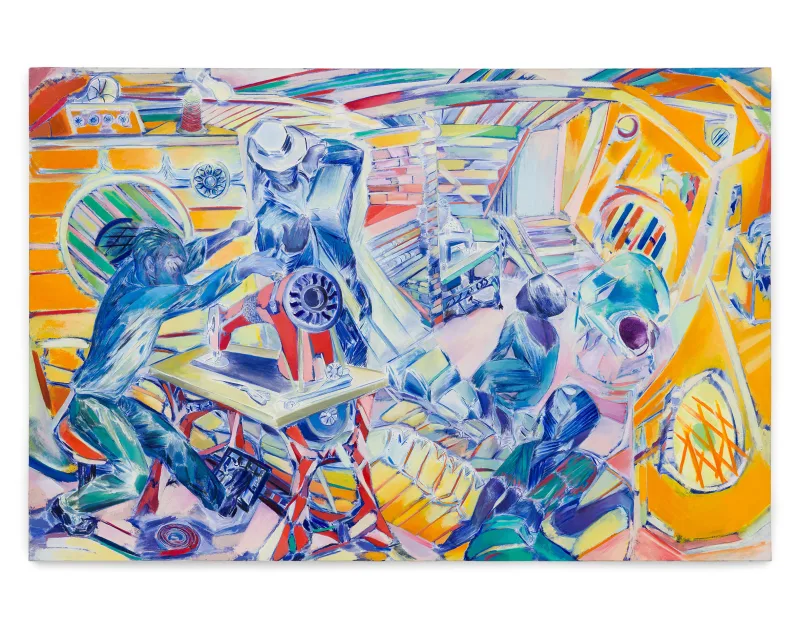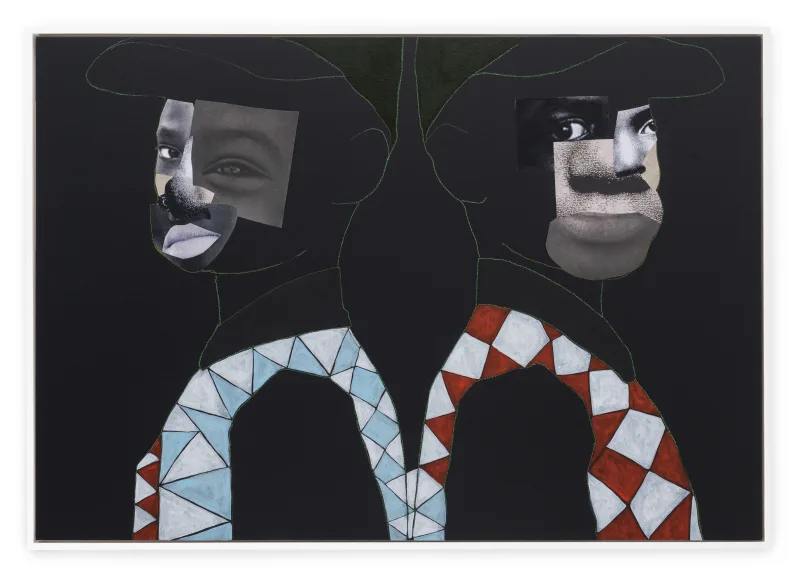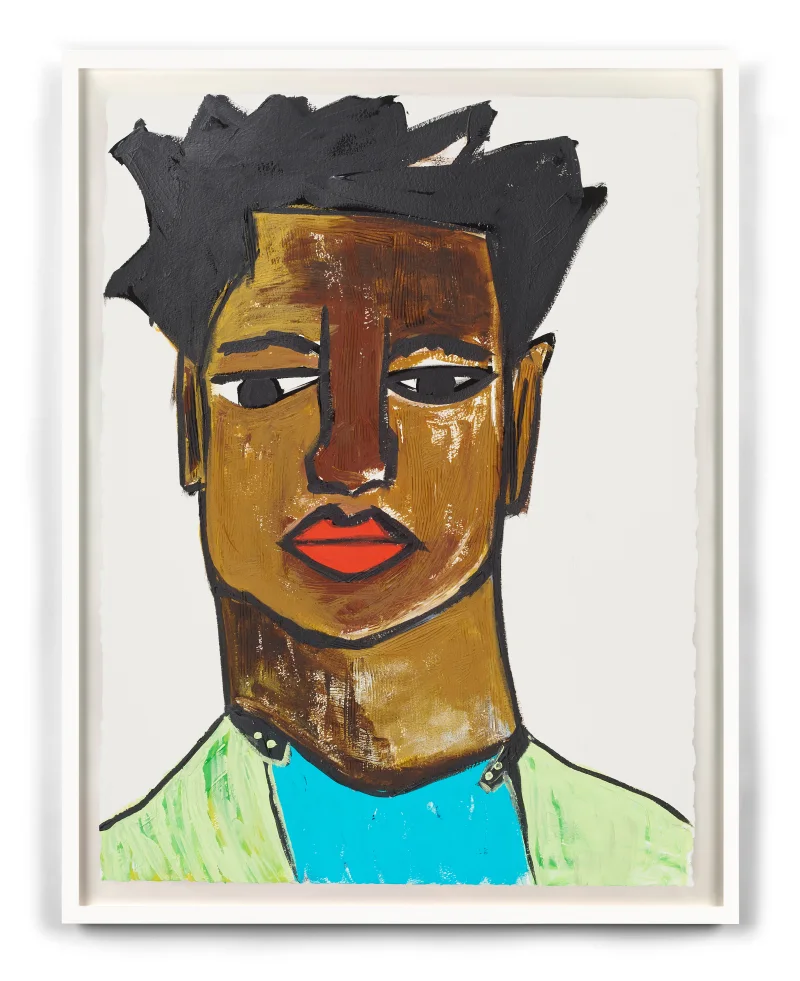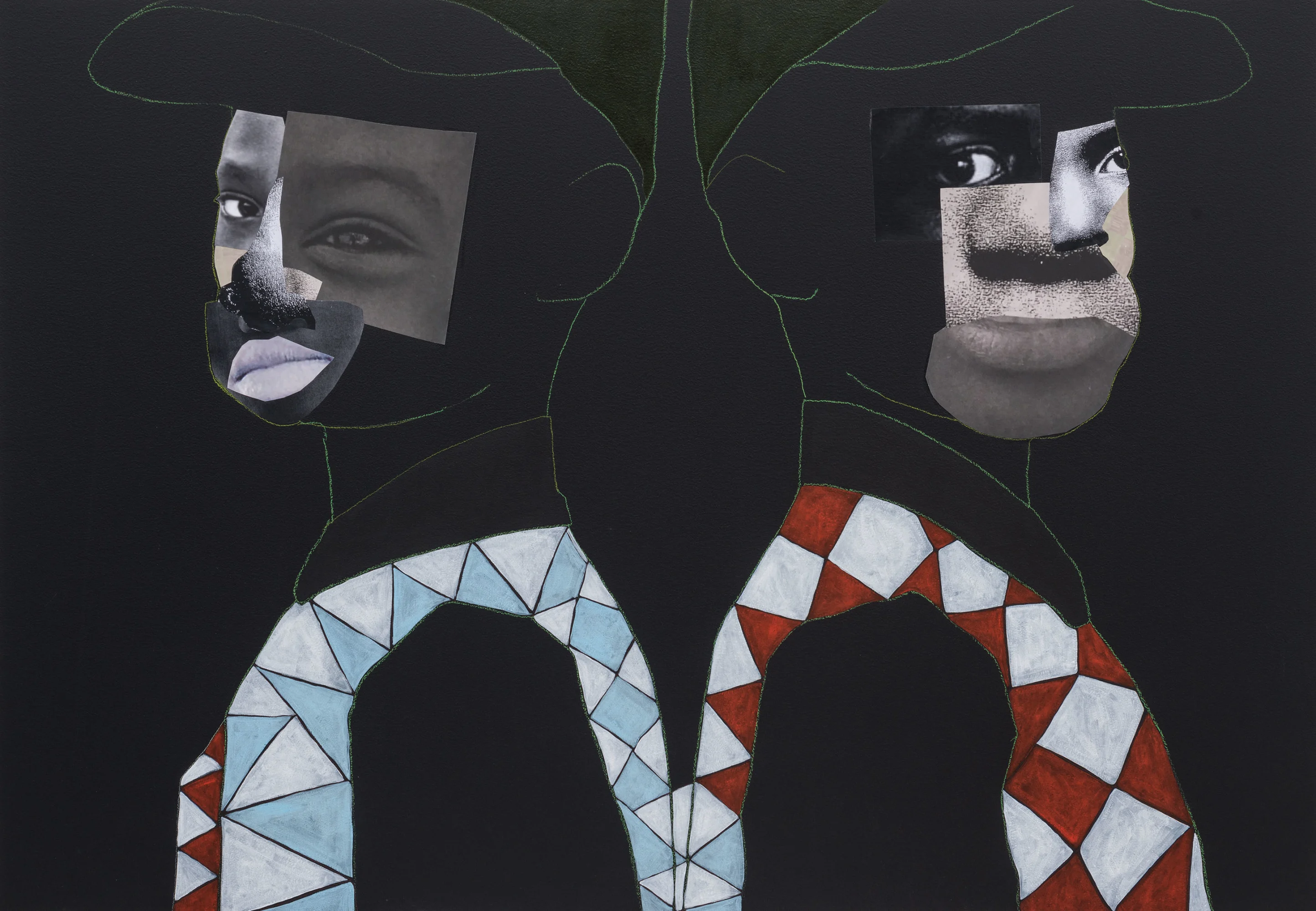
Frieze Seoul
Overview
Stephen Friedman Gallery brings together artists Mamma Andersson, Leilah Babirye, Sarah Ball, Denzil Forrester, Hulda Guzmán, Deborah Roberts, Anne Rothenstein, Jiro Takamatsu and Caroline Walker for the first ever edition of Frieze Seoul. Each artist represents unique perspectives on figuration and landscape with new paintings and sculptures.
A large new work by Deborah Roberts (African-American) is exhibited following her recent solo show in London, her second with Stephen Friedman Gallery. Combining collage with mixed media, Roberts depicts the complexity of Black subjecthood and explores themes of gender politics, race and identity. Her use of collage reflects the challenges encountered by young Black children as they strive to build their identity, particularly as they respond to preconceived social constructs perpetuated by the Black community, the white gaze and visual culture at large.
Leilah Babirye (Ugandan) transforms everyday materials into objects that address issues surrounding identity, sexuality and human rights. ‘Kuchu Ndagamuntu (Queer Identity Card)’ is a series of paintings on paper depicting ambiguously gendered people from Uganda, inspired by passport photos or identity cards. The works emphasise how the LGBTQIA+ community face more discrimination and experience a lack of legal protection and healthcare. Babirye also presents a new ceramic sculpture composed with debris collected from the streets of New York. The artist’s choice to use discarded materials in her work is intentional – the pejorative term for a gay person in the Luganda language is ‘ebisiyaga’, meaning sugarcane husk. “It’s rubbish,” explains Babirye, “the part of the sugarcane you throw out.” Collectively, these works envisage a utopia of queer Ugandans liberated from the homophobic oppression of the artist’s homeland. A commission of two large scale sculptures by the artist is included in Public Art Fund’s ‘Black Atlantic’ at Brooklyn Bridge Park, New York until November 2022.
Also working with themes of identity, Sarah Ball’s (British) sensitively painted subjects often contest binary notions of gender. In a new painting, Ball’s use of soft brushstroke, muted colour palette and a monochromatic background contrast with the confrontational gaze of her subject.
Stephen Friedman Gallery brings together artists Mamma Andersson, Leilah Babirye, Sarah Ball, Denzil Forrester, Hulda Guzmán, Deborah Roberts, Anne Rothenstein, Jiro Takamatsu and Caroline Walker for the first ever edition of Frieze Seoul. Each artist represents unique perspectives on figuration and landscape with new paintings and sculptures.
A large new work by Deborah Roberts (African-American) is exhibited following her recent solo show in London, her second with Stephen Friedman Gallery. Combining collage with mixed media, Roberts depicts the complexity of Black subjecthood and explores themes of gender politics, race and identity. Her use of collage reflects the challenges encountered by young Black children as they strive to build their identity, particularly as they respond to preconceived social constructs perpetuated by the Black community, the white gaze and visual culture at large.
Leilah Babirye (Ugandan) transforms everyday materials into objects that address issues surrounding identity, sexuality and human rights. ‘Kuchu Ndagamuntu (Queer Identity Card)’ is a series of paintings on paper depicting ambiguously gendered people from Uganda, inspired by passport photos or identity cards. The works emphasise how the LGBTQIA+ community face more discrimination and experience a lack of legal protection and healthcare. Babirye also presents a new ceramic sculpture composed with debris collected from the streets of New York. The artist’s choice to use discarded materials in her work is intentional – the pejorative term for a gay person in the Luganda language is ‘ebisiyaga’, meaning sugarcane husk. “It’s rubbish,” explains Babirye, “the part of the sugarcane you throw out.” Collectively, these works envisage a utopia of queer Ugandans liberated from the homophobic oppression of the artist’s homeland. A commission of two large scale sculptures by the artist is included in Public Art Fund’s ‘Black Atlantic’ at Brooklyn Bridge Park, New York until November 2022.
Also working with themes of identity, Sarah Ball’s (British) sensitively painted subjects often contest binary notions of gender. In a new painting, Ball’s use of soft brushstroke, muted colour palette and a monochromatic background contrast with the confrontational gaze of her subject.
Like Ball, Caroline Walker (British) also explores themes of gender. Her cinematic paintings reveal the diverse social, cultural and economic experiences of women living in contemporary society. Drawing on photographic source material, her works blur the boundary between objective documentary and personal experience. Walker’s focus is on the everyday lives of women, the often-overlooked jobs they perform and the psychologically charged spaces they inhabit. From anonymous subjects to highly personal portrayals of those close to her, Walker’s paintings examine the value of ‘women’s work’ whilst hinting at the subjects’ inner lives.
Denzil Forrester (Grenadian-British) has long been inspired by dub and reggae music and travelled to Kingston, Jamaica, where dub had originated at around the time that he moved from Grenada to East London in the late 1960s. While there, the artist spent time making sketches at nightclubs and then paintings portraying the action of flourishing musical scenes. Forrester’s work will be included in the 58th Carnegie International in Pittsburgh in September and ‘Forecast Form: Art in the Caribbean Diaspora, 1990s-today’ at Museum of Contemporary Art, Chicago, in November.
Also taking influence from the Caribbean with elements of Mexican muralism and folk traditions, Hulda Guzmán’s (Dominican) mythical works conjure a sense of harmony between human and natural worlds. A new painting on cedar plywood embodies the artist’s ongoing interest in the creation of playful scenes, featuring a cast of people and animals set in a modernist interior. Though human figures drive her narratives, the artist prompts the viewer to recognise nature as a protagonist.
Inspired by filmic imagery, theatre sets and period interiors, Mamma Andersson’s (Swedish) compositions are often dreamlike and expressive. Her subject matter revolves around melancholic landscapes and nondescript domestic interiors. While stylistic references include turn-ofthe-century Nordic figurative painting, folk art, and local or contemporary vernacular, Andersson’s evocative use of pictorial space and her juxtapositions of thick paint and textured washes are uniquely her own.
Dreamlike qualities are also present in Anne Rothenstein’s (British) enigmatic paintings. Mysterious figures populate flattened landscapes and interiors. The artist draws inspiration from found imagery, personal experience and memory, working instinctively to communicate atmosphere and psychological tension. Rothenstein’s first solo show with Stephen Friedman Gallery will take place in September.
A specially curated presentation of works by Jiro Takamatsu (1936–1998) (Japanese) come directly from the artist’s estate. Takamatsu was an influential artist, theorist, and teacher in 1960s and 1970s Japan. The artist’s work combined subversive and playful aspects of Dada and Surrealism with an idiosyncratic use of minimalism. Takamatsu has had numerous projects in the Asian region including one at The National Museum of Art, Osaka, Japan (2015).
Installation Views
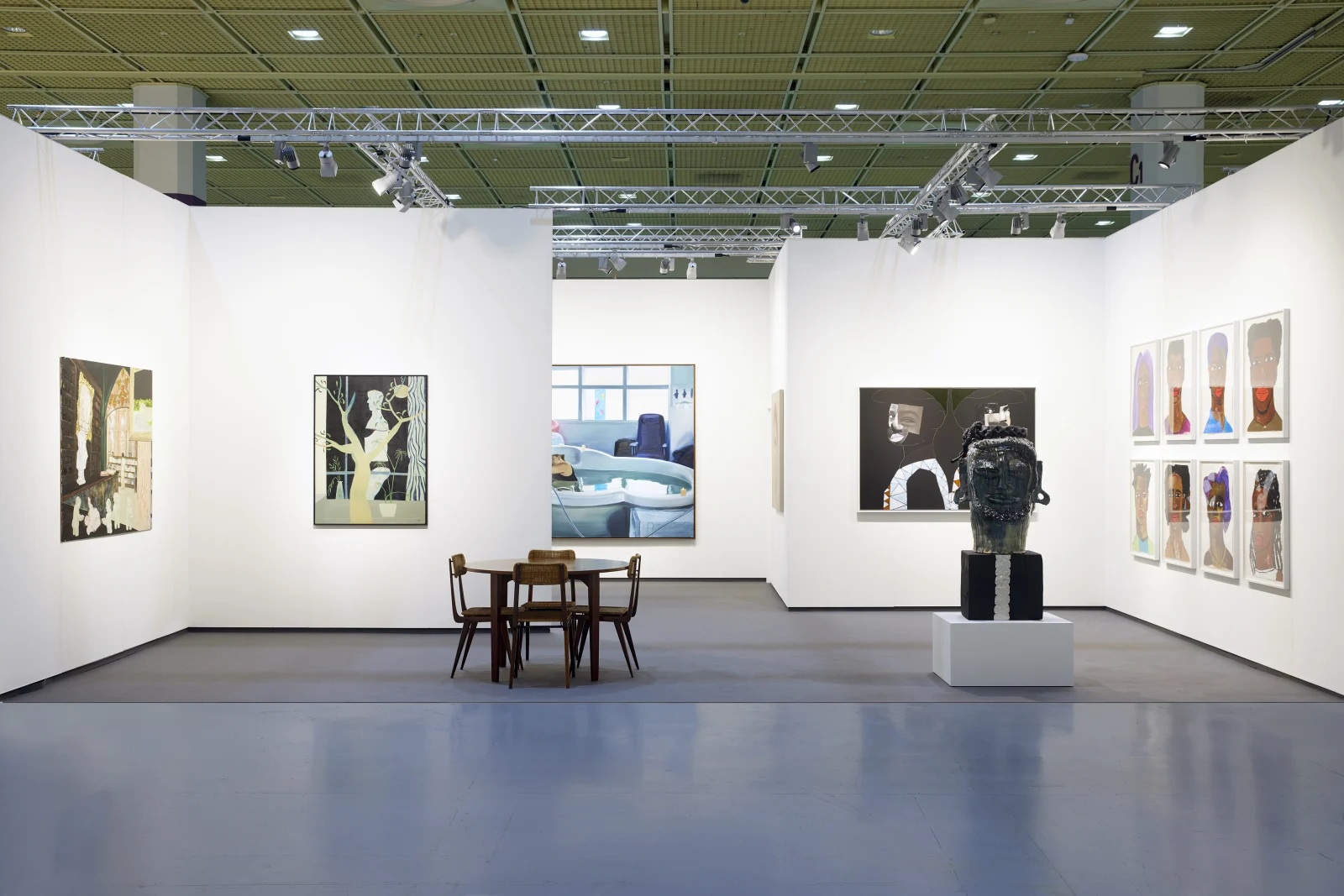


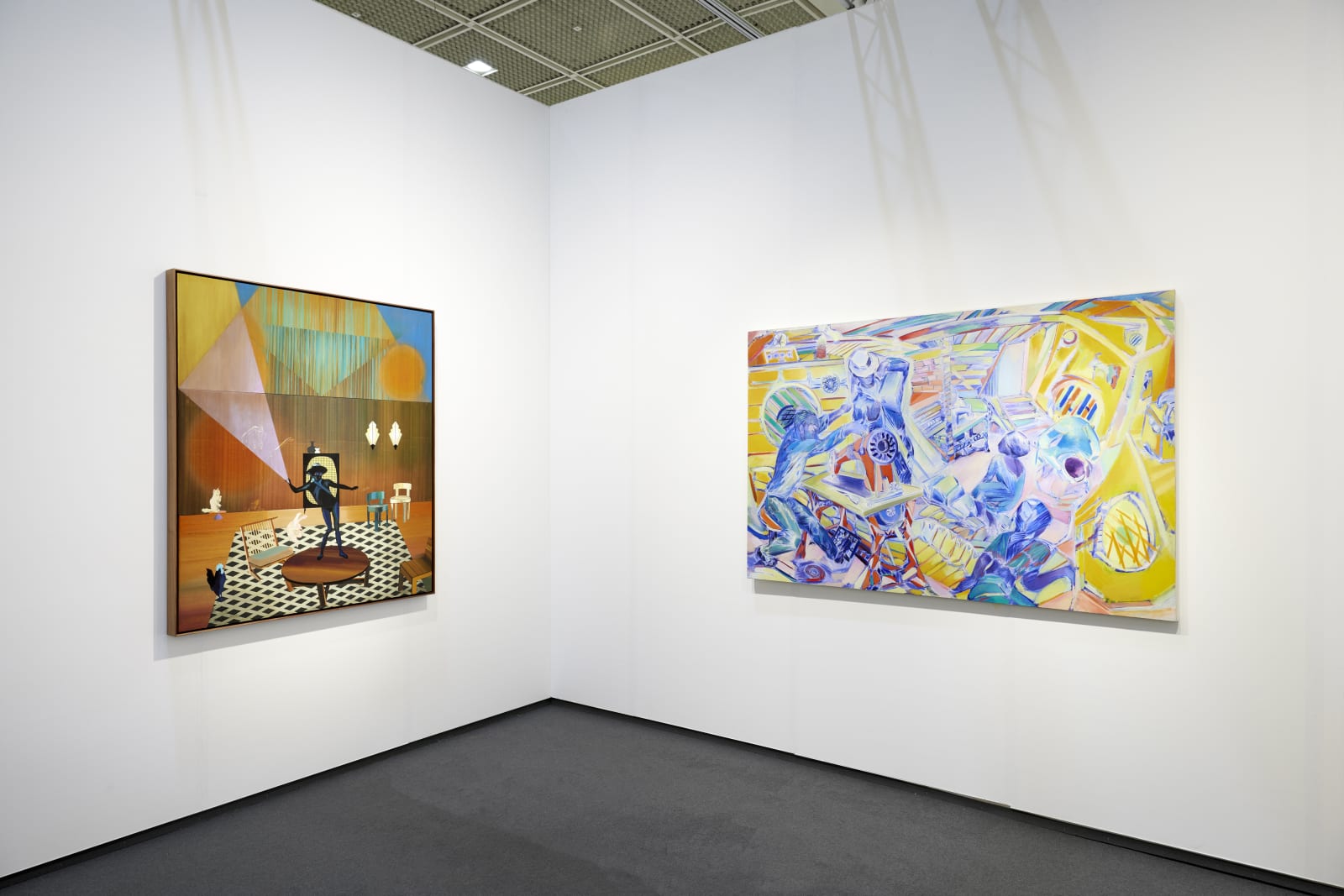

Selected Artworks


